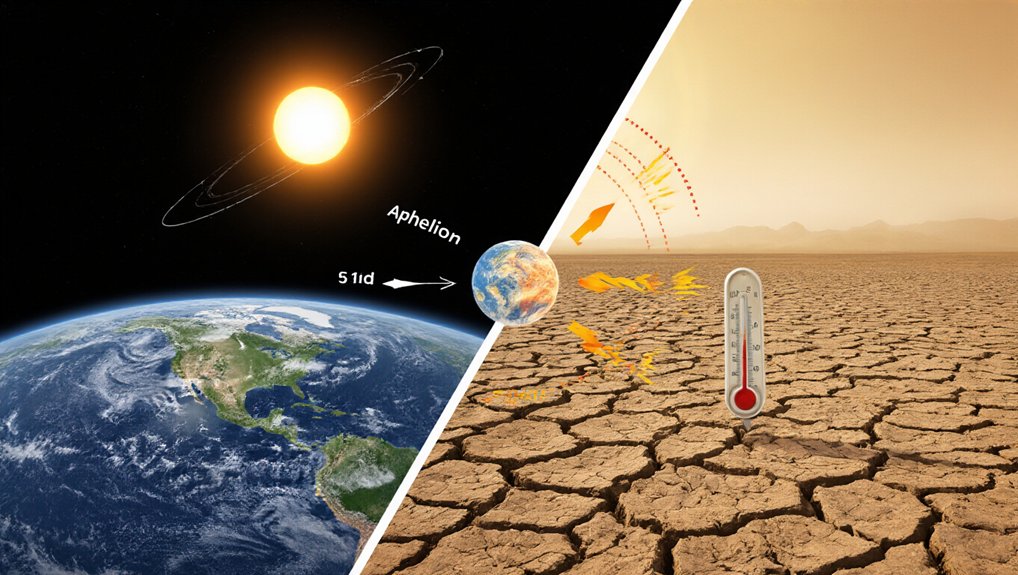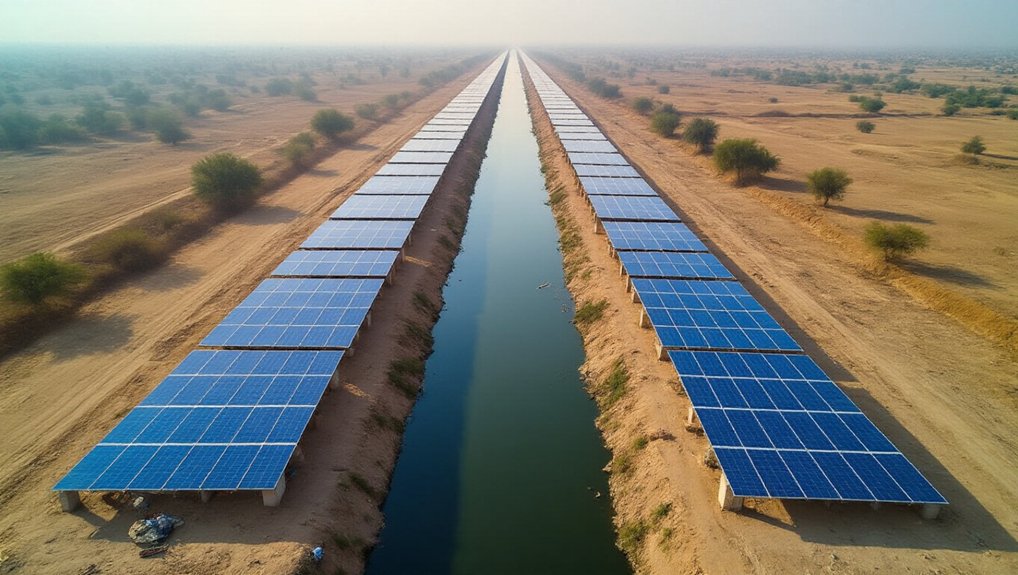Why do we swelter through summer heat when Earth is actually farthest from the sun? It sounds completely backward, but it’s true. Right when Northern Hemisphere residents are cranking up air conditioners and complaining about heat waves, our planet is cruising at its maximum distance from our star. In 2025, Earth reached aphelion—that’s science-speak for “far from sun”—on July 3, sitting a whopping 94.5 million miles away.
Yet somehow, we’re roasting. Makes no sense, right?
Wrong. The culprit isn’t distance—it’s tilt. Earth’s 23.5-degree axial tilt decides our seasons, not our cosmic road trip around the sun. During summer months, the Northern Hemisphere leans toward the sun like someone trying to get a better tan. This positioning means sunlight hits more directly and sticks around longer each day. More sun hours equal more heat. Simple math.
Earth’s axial tilt—not distance—creates our seasons, directing sunlight like a tilted flashlight beam across our planet.
The difference in Earth’s distance throughout the year only changes solar energy by about 7%. Meanwhile, that stubborn tilt creates dramatic shifts in how concentrated sunlight becomes at different latitudes. This orbital variation is minimal since Earth’s orbit is almost circular with distance changing by just over 3%. Think of it like a flashlight beam—point it straight at something, it’s bright; angle it, and the light spreads out, becoming weaker.
Here’s another wrinkle: the Northern Hemisphere has more land than its southern counterpart. Land heats up faster than oceans—anyone who’s walked barefoot from beach sand to water knows this painfully well. In summer, solar energy levels can exceed winter values by nearly 300%, dramatically increasing surface temperatures.
So when summer hits up north, all that land bakes quickly under direct sunlight. Unlike geothermal energy which offers year-round reliability regardless of seasonal changes, solar intensity fluctuates dramatically with Earth’s axial tilt.
The seasonal timing isn’t perfectly balanced either. Earth moves slightly faster at perihelion (closest approach), which actually shortens Northern winters by about 15 minutes. Small comfort when you’re sweating through August, but there it is.
References
- https://earthsky.org/astronomy-essentials/earth-farthest-from-sun-for-year-in-early-july/
- https://economictimes.com/news/international/us/why-summer-arrives-when-earth-is-farthest-from-the-sun-the-aphelion-paradox/articleshow/122277923.cms
- https://www.timeanddate.com/astronomy/perihelion-aphelion-solstice.html
- https://www.youtube.com/watch?v=PfbuLqwW9xk
- https://www.space.com/astronomy/earth/earth-is-farthest-from-the-sun-today-so-why-is-it-so-hot








